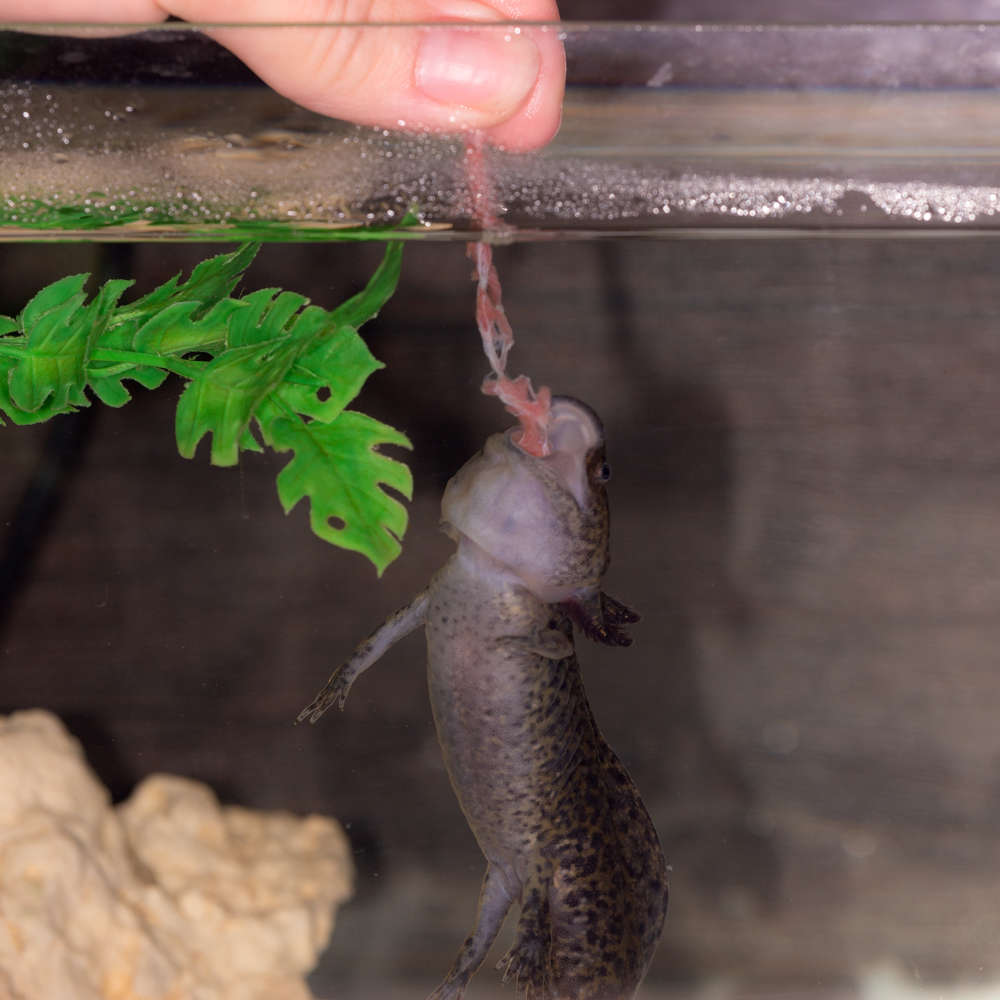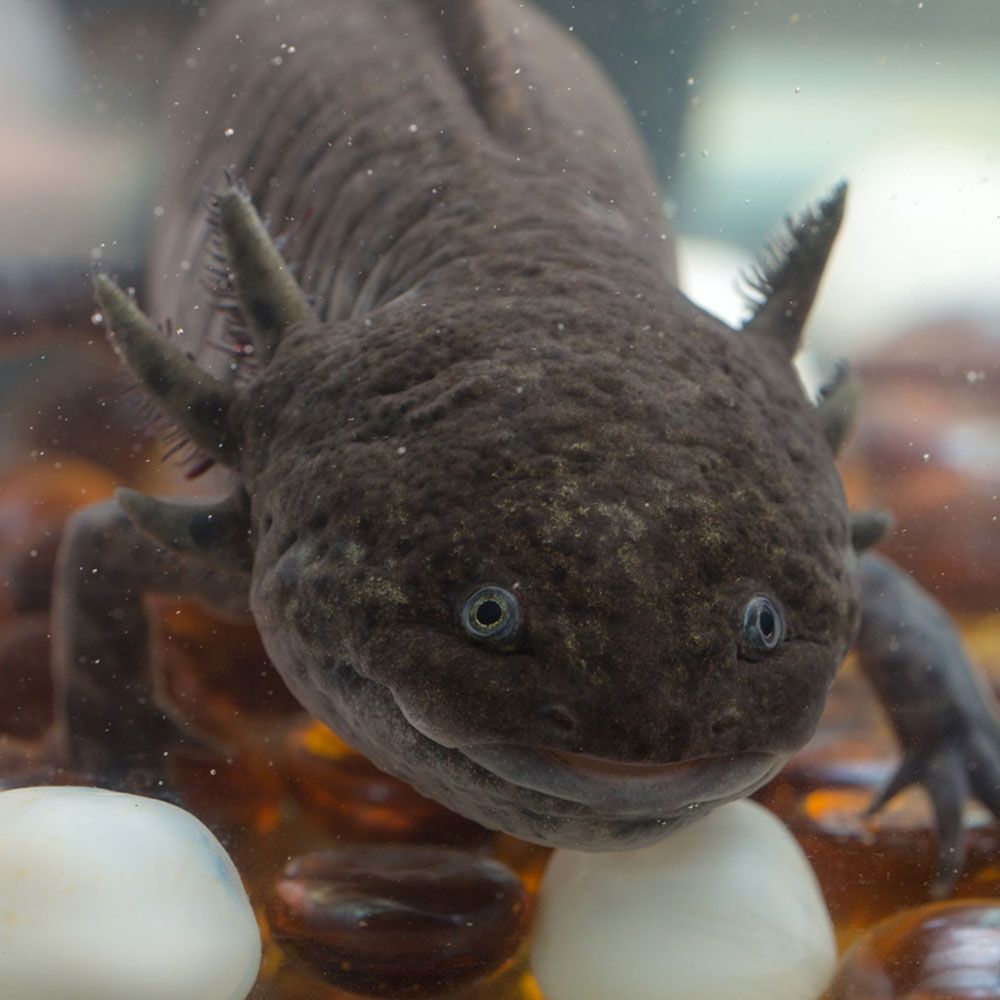What is a Black Axolotl?
The black axolotl is an artificial color morph of axolotls. It is quite darker than regular axolotls and has spots on its head and back.
Owing to its mysterious appearance, it has gained drastic popularity among aquatic pet enthusiasts.
This solitary smiling salamander has always brought a ton of fun to the aquarium-keepers with slight experience.
If you’re curious to know more, let’s get right into it.
Note: To keep this unique aquatic creature as a pet, please refer to the main axolotl care guide. All axolotls have the same care requirements irrespective of their color morph.
What is the History of Black Axolotl?
This unique color mutation was discovered in 1961 and has been popular among hobbyists ever since.
Black axolotls are easy to find in aquarium stores and are also called melanoid axolotls because of their heavy black pigments.
While some claim that these axolotls existed in nature, it’s actually a result of selective breeding.
Which Genes do Black Melanoid Axolotls come from?
The black color of these axolotls comes from a special gene that makes a pigment called eumelanin.
Scientists are curious about how this works. This mystery makes black axolotls fascinating for scientists and common people interested in genetics.
Unlike their albino counterparts, black axolotls have melanophores instead of iridophores in their pigments, giving them their specific black appearance.
How do black Axolotls look?

Black axolotls can vary in color from dark green to completely black, and they have distinctive dark purple-colored gills.
Most have a pale grey or purplish belly, while some look like dark wild-type ones but lack their shiny golden iris.
They are easy to spot due to their all-black color, unique freckles, spiky manes, and webbed feet.
Unlike albino variants, black ones have black or slightly purple filaments instead of pink. True black axolotls have black gill filaments and eyes, setting them apart from similar-looking wild morph axolotls.
Pros and Cons of Having a Black Axolotl
What are the advantages of having a black Axolotl?
Black axolotls are popular as aquatic pets for the following reasons:
- They’re much more interactive with owners than other axolotls. Some can even bond with their owners.
- They are popular for their striking colors.
What are the disadvantages of having a black Axolotl?
Unlike most other axolotls, black axolotl is much more sensitive to human touch. It gets extremely stressed even if it’s held underwater.
What is the Cost of Black Axolotl?
They’re rare and pricey in the USA, ranging from $100 to $200 or more. In the UK, they’re priced between £80 to £150 or more.
Like many reptile pets, juveniles are cheaper than adults. Their costs vary worldwide.
A word from FishInAquarium
Black axolotls are captivating and distinct pet creatures that demand specific care for their health.
A suitable habitat, proper diet, and regular maintenance ensure their well-being and long life. With patience and dedication, owning one can become a truly fulfilling experience.
If you found the information interesting, why not share it with others who share the same passion? Dive into the journey of raising these creatures with your buddies!
If you have any further questions or need more details, don’t hesitate to contact us via email. We’ll gladly answer all your queries on your journey to raise them!


